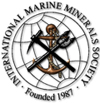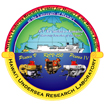UMI 2008 • Sponsors
 International Seabed Authority
International Seabed Authority
Satya Nandan, Secretary-General
International Seabed Authority (ISA) is an autonomous international organization established under the 1982 United Nations Convention on the Law of the Sea and the 1994 Agreement relating to the Implementation of Part XI of the United Nations Convention on the Law of the Sea (UNCLOS). ISA is responsible for the administration of seabed mineral resources that lie beyond the limits of national jurisdiction. ISA has its headquarters in Kingston, Jamaica. It came into existence on 16 November 1994, upon the formal entry into force of UNCLOS. The first Secretary-General of the Authority, Satya Nandan (Fiji) was elected in March 1996, and the Authority became fully operational as an autonomous international organization in June 1996.
The University of Mississippi
 Office of Research & Sponsored Programs
Office of Research & Sponsored ProgramsRobin C. Buchannon, Assistant Vice-Chancellor
The Office of Research & Sponsored Programs creates and maintains the optimum environment for The University of Mississippi community to achieve excellence in research, scholarship, and the dissemination of knowledge. ORSP strives to: enhance capacity to pursue research and scholarship, and disseminate knowledge for the benefit of society; ensure ethical and responsible conduct of research and good stewardship of resources; and represent the research and scholarly goals, priorities, interests and concerns of the University community.
Center for Marine Resources and Environmental Technology
Mississippi Mineral Resources InstituteJ. Robert Woolsey, Director
 The Center for Marine Resources and Environmental Technology (CMRET) is a
research program administered by The Mississippi Mineral Resources Institute at The University of Mississippi, supported by Department of
Interior Minerals Management Service. The CMRET was first established in 1987 as one of six national academic research centers of the U.S.
Bureau of Mines for the study of marine minerals and related environmental issues. Known originally as The Marine Minerals Technology Center,
the name was changed in 1996 after the program was shifted to MMS control, following decommissioning of the Bureau of Mines. The program mission
has remained virtually unchanged since inception. A principal role of the Center is that of a facilitator for the access of academic and
industrial expertise throughout the United States and Canada on behalf of the MMS to assist in the conduct of its mission. In addition, CMRET
provides direct access to in-house expertise in areas of geophysics and geotechnical systems design, development, and operation on projects of
interest to the MMS. A current example is the Gulf of Mexico Hydrates Research Consortium, served by CMRET as program manager, and the
Consortium’s main program, the Gas Hydrates Monitoring Station where CMRET serves as facilitator and also as a provider of innovative
geophysical and geotechnical systems and services. The MMRI also serves as the home for the Seabed Technology Research Center (STRC), a
division of the National Institute for Undersea Science and Technology. The overall goal of the STRC is the research and development of
remote sensor and direct sampling technologies for the investigation of the deep sea.
The Center for Marine Resources and Environmental Technology (CMRET) is a
research program administered by The Mississippi Mineral Resources Institute at The University of Mississippi, supported by Department of
Interior Minerals Management Service. The CMRET was first established in 1987 as one of six national academic research centers of the U.S.
Bureau of Mines for the study of marine minerals and related environmental issues. Known originally as The Marine Minerals Technology Center,
the name was changed in 1996 after the program was shifted to MMS control, following decommissioning of the Bureau of Mines. The program mission
has remained virtually unchanged since inception. A principal role of the Center is that of a facilitator for the access of academic and
industrial expertise throughout the United States and Canada on behalf of the MMS to assist in the conduct of its mission. In addition, CMRET
provides direct access to in-house expertise in areas of geophysics and geotechnical systems design, development, and operation on projects of
interest to the MMS. A current example is the Gulf of Mexico Hydrates Research Consortium, served by CMRET as program manager, and the
Consortium’s main program, the Gas Hydrates Monitoring Station where CMRET serves as facilitator and also as a provider of innovative
geophysical and geotechnical systems and services. The MMRI also serves as the home for the Seabed Technology Research Center (STRC), a
division of the National Institute for Undersea Science and Technology. The overall goal of the STRC is the research and development of
remote sensor and direct sampling technologies for the investigation of the deep sea.
 The National Institute for Undersea Science and Technology (NIUST)
The National Institute for Undersea Science and Technology (NIUST)Ray Highsmith, Executive Director
The National Institute for Undersea Science and Technology (NIUST) was established in 2002 in partnership with NOAA's Undersea Research Program (NURP) to develop and apply new technologies that enhance undersea research. NIUST is made up of three divisions: the Ocean Biotechnology Center & Repository (OBCR), the Seabed Technology Research Center (STRC), and the Undersea Vehicles Technology Center (UVTC) which broadly encompass the fields of biotechnology (e.g., biomedical and agrochemical products) and engineered technologies (e.g., instrumentation development) in the marine environment. NIUST is providing cutting edge technologies to NURP and their constituencies to further the nation's research capabilities in nearshore, deep water, and extreme marine environments.NIUST is based at The University of Mississippi (Oxford MS) and at The University of Southern Mississippi (Stennis Space Center MS). NIUST provides support and instrumentation to the NURP regional centers, as well as extramural grant support to the federal and non-federal communities. In addition, NIUST scientists are funded to develop new technologies and problem solve techniques/technologies into various marine habitats.
The Ocean Biotechnology Center and Repository, NIUST
Marc Slattery, Director
The Ocean Biotechnology Center and Repository (OBCR) is a division of the National Institute for Undersea Science and Technology. Housed within the School of Pharmacy and affiliated with the National Center for Natural Products Research at The University of Mississippi, the overall goal of the OBCR program is to create a national repository of biochemical/biomolecular products of marine organisms from U.S. and international waters for use by the biotechnology research sector.The Department of Geology and Geological Engineering
Greg Easson, Chair
The School of Engineering at The University of Mississippi was founded in 1900 beginning its rich history as the oldest engineering school in the state. Included within the School is the Department of Geology and Geological Engineering whose primary goal is to educate students whose careers will serve the state of Mississippi and the needs of the nation and the world.
The University of Southern Mississippi
 The Undersea Vehicles Technology Center, NIUST
The Undersea Vehicles Technology Center, NIUSTVernon Asper, Director
The Undersea Vehicles Technology Center (UVTC) is a division of the National Institute for Undersea Science and Technology. The overall goal of the UTVC program is the development of viable technologies involving interactive communication, systems command and control, data assimilation and processing, and artificial intelligence appropriate for the operation/deployment of ROVs and AUVs.
 International Marine Minerals Society
International Marine Minerals Society
Akira Usui, President
The International Marine Minerals Society is a professional society whose members share a common interest in various aspects of marine minerals. Founded in 1987, the IMMS now includes a worldwide membership of individuals from industry, government agencies, and academic institutions. The primary objectives of the IMMS are to: (1) promote and improve the understanding of marine mineral deposits within the province of the global ocean; (2) aid in the interchange of information among members through networking and formal symposia; (3) encourage the prudent development of marine mineral resources, including concern for the environment; and (4) encourage research in all aspects of marine minerals development.
IMMS is a co-sponsor of the Underwater Mining Institute (UMI) and holds its annual meetings in conjunction with the UMI. Members of the IMMS receive timely e-news, which includes summaries of the latest developments in the field of marine minerals. On occasion the IMMS presents The Moore Medal award to an individual who has contributed notably to the goals and initiatives of the Society in the areas of research, development and management. The Moore Medal is named in honor of the late Professor J. Robert “Robby” Moore. Professor Moore spent a long and distinguished career dedicated to the goals that are now followed by IMMS. He founded the UMI in 1970, and with the collaboration of several colleagues, initiated IMMS in 1987.
 Hawai‘i Undersea Research Laboratory
Hawai‘i Undersea Research Laboratory
John C. Wiltshire, Director
The Hawai‘i Undersea Research Laboratory (HURL) at the University of Hawai‘i was established to study deepwater marine processes in the Pacific Ocean. Charged with manned submersibles and an ROV, HURL research projects cover the geology and biology of emerging and subsiding islands, marine product and fishery assessments, processes of submarine mineral accumulations on seamounts, volcanoes, and islands, and deep-sea marine ecosystems influenced by natural and man-induced processes.
 The Marine Technology Society
The Marine Technology Society
The Marine Technology Society (MTS) is the world’s largest international professional society solely dedicated to the study and pursuit of marine technology. It is composed of scientists, engineers, and policy makers from industry, government and academia dedicated to the pursuit of technical excellence and appropriate application in the widest range of marine technologies. Through its sponsorship of the Underwater Mining Institute, MTS hopes to encourage the development of a successful and environmentally responsible marine mining industry.
[ Top of this page ]



